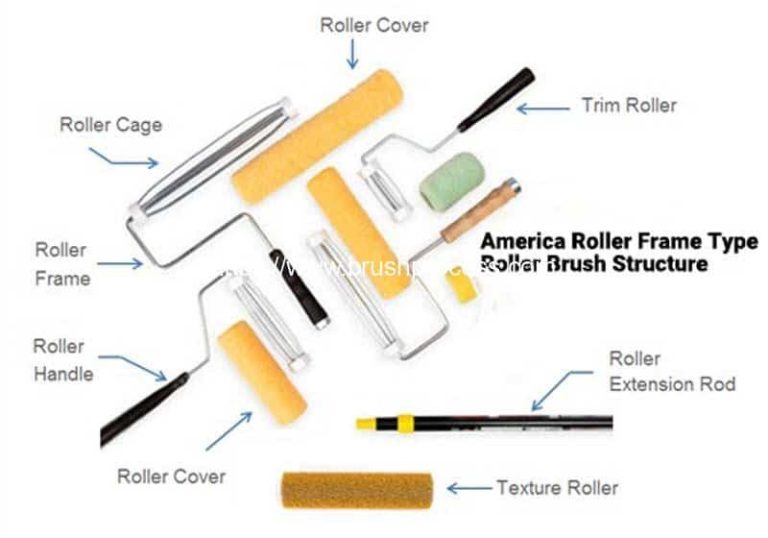What Clay Is Best For Sculpting Figures?
Introduction
While there are various clay types used for sculpting, figures are best sculpted from clays that are easily moldable and can capture as much detail as possible. The main types of clay used for sculpting figures are oil-based clays, polymer clays, earthenware clays, and air-dry clays. Each has their own properties and characteristics that make them suitable for different applications.
This article will provide an overview of the most popular and widely available clays used for sculpting figures. We’ll explore the benefits and drawbacks of each type, from oil-based clays that never fully cure to polymer clays that can be hardened in a home oven. Along with guidance on choosing the right clay for your project and skill level, we’ll also look at best practices for working with and finishing clay sculptures.
Oil-Based Clays
Oil-based clays such as plasticine, Roma Plastilina, and Van Aken Plastalina are non-drying clays made of oils, waxes, and fillers like talc and gypsum. They are very soft and malleable, making them easy to shape and sculpt. Since they are non-drying, oil-based clays remain workable for months if stored in an air-tight container. They are also reusable, so scraps can be reworked into the sculpture. The finished pieces remain permanently soft and will slowly harden over several years.
The most common brand of oil-based clay is plasticine. It has a smooth, creamy texture that is excellent for sculpting fine detail. Plasticine doesn’t dry out when exposed to air and doesn’t harden at all. It can be continuously reworked and even melted and reused. One downside is that it can leave oily residues on hands and surfaces. Roma Plastilina has similar properties but has a firmer consistency for easier handling. Van Aken Plastalina also remains permanently pliable but has a slightly stiffer texture than plasticine.
Overall, oil-based clays like plasticine are a superb choice when you want to be able to continually modify and refine a sculpture over a long time. The flexibility to remake and undo mistakes makes them ideal for sculptors of all skill levels. They are especially suitable for creating small figurines, jewelry, and detailed works.
Polymer Clays
Polymer clays such as Sculpey, Fimo and Cernit are plasticine-like modeling materials made from PVC resin mixed with additives like plasticizers and pigments. They have a soft, elastic texture when conditioned and do not require baking or firing to set permanently.
Some key benefits of polymer clays include:
- Flexible and easy to condition – warms up nicely in your hands.
- Holds fine detail well for creating delicate, smooth sculptures.
- Available in dozens of bright, vivid colors as well as translucent effects.
- Does not dry out when exposed to air like other clays.
- Sets permanently and becomes hard after baking in a home oven.
Limitations include:
- Relatively expensive compared to other clays.
- Can be sticky and soft if under-conditioned.
- Subject to color distortion or scorching if baked at too high of a temperature.
- Finished pieces are lightweight and not suitable for large sculptures.
Overall, polymer clays are an excellent choice for jewelry, miniature figurines, dolls and other decorative objects. The ability to achieve very smooth surfaces and fine details makes them ideal for modeling faces, hands and delicate textures.
Water-Based Clays
Water-based clays, like pottery clay and self-hardening clay, are water-soluble clays that can be easily softened and molded when water is added. They harden as they dry, either through air-drying or firing in a kiln. The key properties of water-based clays are:
- They are porous and can absorb water, allowing them to be softened repeatedly.
- They can be molded and shaped when wet, holding fine detail.
- They harden to a durable ceramic as they dry.
- Firing makes them harder and more durable, but is not always required.
- They come in various colors like grey, red and white based on mineral content.
Water-based clays are ideal for sculpting figures and objects with fine detail that need to hold their shape without slumping or sagging as they dry. The ability to soften and rework the clay makes it great for sculpting intricate forms. Water-based clays are commonly used for pottery, ceramic sculptures, homemade modeling clay, and clay craft projects. Their workability and casting ability lend well to sculpting human or animal figures.
Earthenware Clays
Earthenware clays are one of the most commonly used clays for sculpting and come in several varieties. The main types of earthenware clays are terracotta and stoneware.
Terracotta clay is an air-drying clay made from natural clay deposits. It has a distinctive orange-red color when fired due to its high iron oxide content. Terracotta is one of the most versatile clays for sculpting as it can be molded when wet but also carved when leather hard or dry. It has moderate plasticity and strength. Terracotta clays are excellent for hand-building techniques like coil, slab, and pinch pots. Pieces may require hollowing or armatures for structural support when sculpting figures. Terracotta absorbs water easily so sealing is required for any outdoor use.
Stoneware clays are fired at higher temperatures, resulting in a strong, non-porous ceramic that is water-resistant and durable. Stoneware comes in gray, buff, and red colors. It has high plasticity, allowing intricate shaping and detailing. Stoneware is commonly used for sculpting figures, animals and abstract forms. The high clay content provides excellent molding and shaping abilities. Stoneware shrinks minimally and can be fired multiple times, making it suitable for complex sculptures built up over time. Due to its strength, stoneware does not require hollowing or armatures. The smooth surface accepts carving details and refinement.
Air-Dry Clays
Air-dry clays are a popular choice for sculpting figures and models. They cure and harden through evaporation without needing to be baked. Some of the main types of air-dry clays include:
Celluclay – Made from cellulose fibers, this lightweight paper-based clay is easy to work with and dries hard. It’s inexpensive and versatile for sculpting and mold making.
Activa Air-Dry Clay – This premixed clay contains a stabilizer that helps it cure faster without cracking. It has a smooth texture and dries durable and hard.
Benefits of air-dry clays include not needing an oven to cure, quick drying time, and low cost. Limitations are that they can be messy, don’t work as well for detailed sculptures, and pieces are fragile until fully cured.
Choosing the Right Clay
When selecting clay for sculpting figures, there are several factors to consider that depend on your specific project goals and needs:
Intended Use – Are you sculpting a decorative object for display, a toy, or something functional? This will determine if you need clay that is durable, flexible, or fire-hardened. Polymer clays work well for decorative items while earthenware clays are better for functional pieces.
Level of Detail – The fineness of sculpting detail needed may guide you towards polymer or oil-based clays that hold crisp lines. Air-dry clays are better for basic shapes.
Time Investment – Oil and polymer clays don’t dry out allowing you to continually refine a sculpture over longer periods. Earthenware and air-dry clays have shorter working times before drying and curing.
Skill Level – Polymer and oil-based clays are very forgiving for beginners. Earthenware clays require more sculpting skill and air-dry clays are quite fragile.
Safety – Unfired earthenware clay contains silica dust requiring precautions. Polymer clays may also contain phthalates, so check manufacturer guidelines.
Budget – Polymer and oil-based clays cost more per pound. Air-dry clays are the most affordable but have structural limits.
Considering these factors will help match you to the right clay for your project goals and needs, whether that’s an oil-based clay for refined sculptures, polymer clay for durable detailing, earthenware clay for pieces needing firing, or simple air-dry clay for beginners.
Working with the Clay
Once you’ve chosen the type of clay you want to work with, proper storage and preparation of the clay is important for achieving the best results. All clays should be stored in an airtight container or sealed bag to prevent drying out. The clay should be kneaded well and free of air bubbles before beginning to sculpt. For polymer and oil-based clays that come in solid blocks, condition the clay first by kneading and softening.
When sculpting figures, having the right tools makes the process easier. Sculpting tools like loop tools, ribbon tools, wooden tools, and silicon tipped tools allow you to smooth, blend, shape and refine the clay. Clay shapers are great for pushing the clay around and blending. You’ll also need a work surface, which can be something as simple as a wooden board covered in canvas. Use sculpting stands or armatures to support the clay as you build up the figure. As you work, occasionally spray the clay with water or smoothing fluid to keep it malleable.
Take care when handling clay not to leave fingerprints or distort shapes by pressing too hard. Build up the figure gradually using coils, balls or slabs of clay. Use reference images or models as guidance. Pay attention to anatomy, structure and proportions when sculpting the figure. Allow time for the clay to firm up slightly between stages to hold the shape. Keep your tools and hands clean while working to avoid discoloring the clay.
Finishing and Preserving
Once your clay sculpture is complete, there are some important steps to take to finish, preserve, and properly display your artwork. Proper finishing ensures your sculpture maintains its shape, details, and structural integrity over time.
Most clay sculptures must be baked or cured to harden and solidify the clay. Follow the manufacturer’s instructions for proper baking times and temperatures. Polymer clays require baking in a standard oven, while earthenware clays require firing in a high-heat kiln. Allow your piece to cool fully before handling.
Apply a protective sealant to lock in details and prevent paints from flaking. Polyurethane and acrylic sprays work for most clays. Multiple thin coats allow the sealant to fully permeate the clay. Avoid rubbing or handling the sculpture until the sealant has fully cured.
To display clay sculptures, avoid direct sunlight which can cause fading. Control humidity levels in the room, as fluctuations can affect dried clays. Polymer clay pieces are durable enough for regular handling. Earthenware pieces require extra care as they can chip or crack if dropped. Ensure sculptures are securely fastened to prevent tipping or falling.
With proper finishing and care, clay sculptures can last for many years as decorative artworks or collectibles. The finishing process not only protects the sculpture but brings out the depth, shine, and vibrancy of the colors used.
Conclusion
When choosing the right clay for sculpting figures, there are several key factors to consider including desired finished texture, durability, cost, baking requirements, and ease of use. The main types of clays used for figure sculpting each have their own advantages and downsides.
Oil-based clays like plasticine provide a smooth surface and never harden, making them good for sketching and characters. Polymer clays allow intricate detail, come in many colors, and bake to a hard durable finish. Water-based clays are affordable and easy to find but can dry out while sculpting. Earthenware clays fire at high temperatures for strong finished pieces. Air-dry clays are inexpensive and cure quickly without an oven.
For more resources on working with sculpting clays, look to online sculptor communities, manufacturer websites for specific clay products, local classes at art centers, and books dedicated to modeling the figure. With some experimentation, you can determine which clay suits your own sculpting needs and style.



